Shortbread Cookies
This post may contain affiliate links. Read my full disclosure policy.
The rich, buttery goodness of shortbread cookies is hard to beat. These delightfully crumbly cookies are perfect for the holidays or any time you’re in the mood for a sweet treat.
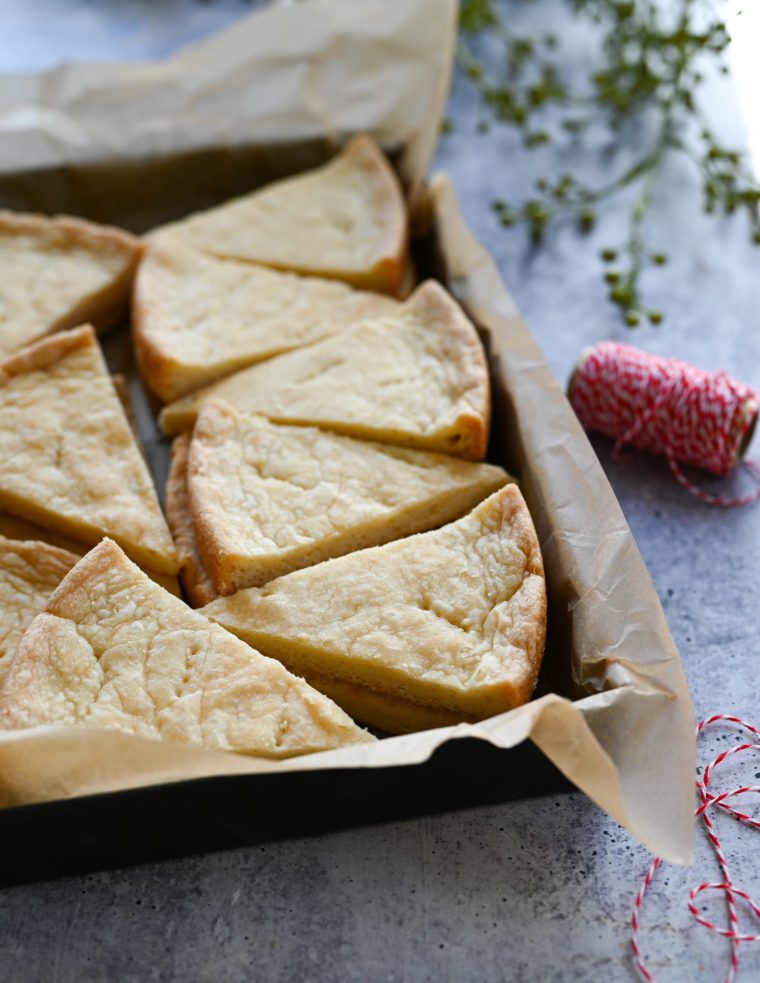
Buttery, crisp, and just sweet enough, classic shortbread cookies are loved for their crumbly texture and rich flavor. They get their name from the generous amount of butter in the dough, which creates that delightful “short” or crumbly texture. (Back in the day, “short” meant crumbly, and the term “shortening” refers to the fat used in making crumbly pastries.) Originally from Scotland, shortbread is often baked in rounds that resemble the sun and then cut into wedges, but you can also bake it in a square pan and cut it into rectangular “fingers.”
These shortbread cookies, adapted from King Arthur Flour, are traditionally served on the winter solstice, Christmas, New Year’s Eve, and New Year’s Day. Once cut, the cookies will keep in an airtight container for up to a month, making them a wonderful treat to bake and give away during the holiday season—or anytime you’re feeling generous, à la Ted Lasso.
“Amazing. Simple. Simply amazing.”
What You’ll Need To Make Shortbread Cookies
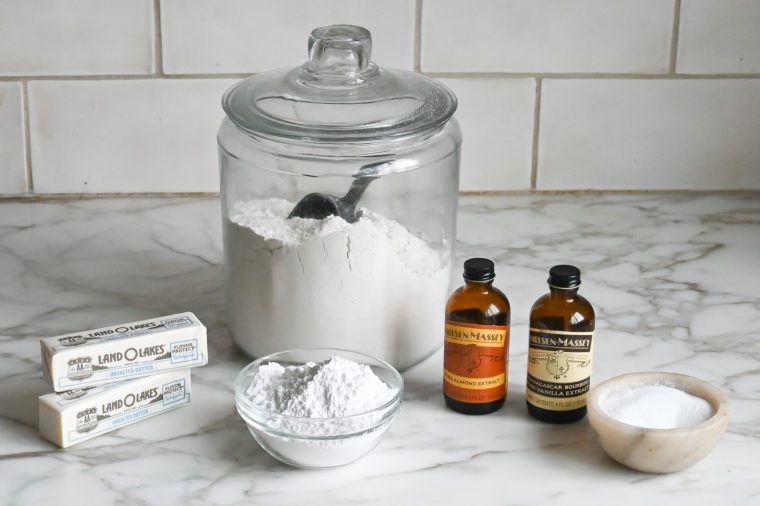
- Butter: Provides richness and flavor to the shortbread.
- Confectioners’ Sugar: Sweetens the shortbread and helps create its delicate crumb texture. Sometimes granulated sugar is used in shortbread, but I prefer confectioners’ sugar as it gives the cookies a softer, melt-in-your-mouth texture.
- Vanilla Extract: Adds a warm and aromatic flavor to the cookies.
- Almond Extract: Infuses a subtle nutty flavor that complements the other ingredients.
- All-Purpose Flour: Forms the base of the dough, providing structure and stability to the shortbread.
- Jump to the printable recipe for precise measurements
Step-By-Step Instructions
In the bowl of a hand-held or stand mixer fitted with the paddle attachment or beaters, combine the butter, sugar, salt, vanilla extract, and almond extract.
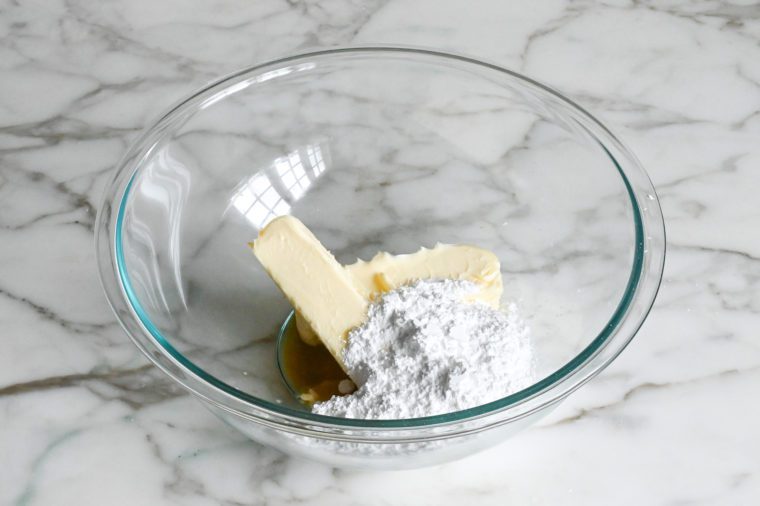
Beat until smooth and creamy, about 1 minute.
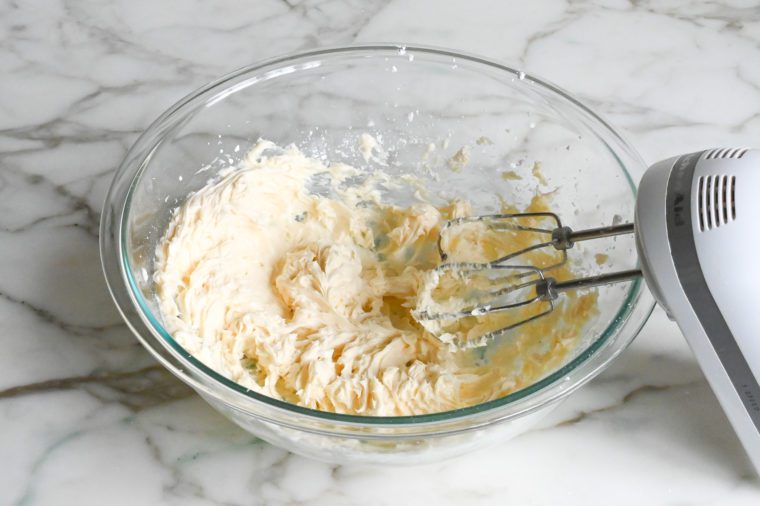 Add the flour.
Add the flour.
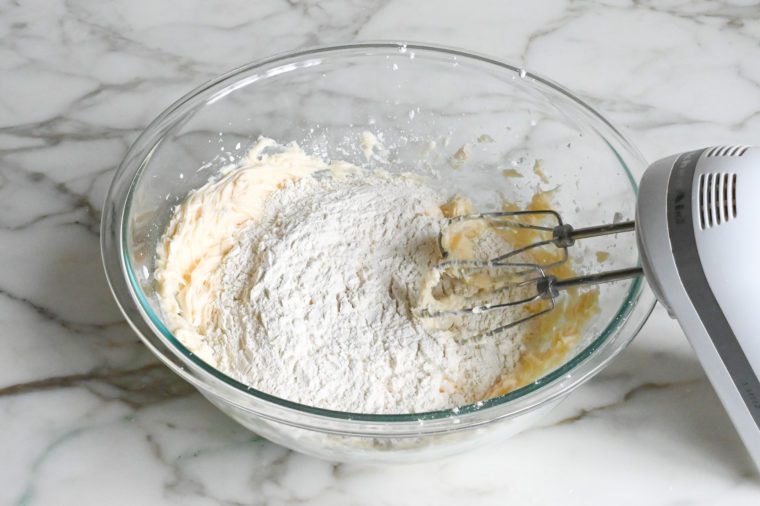
Beat on low speed until the dough comes together in a cohesive mass.
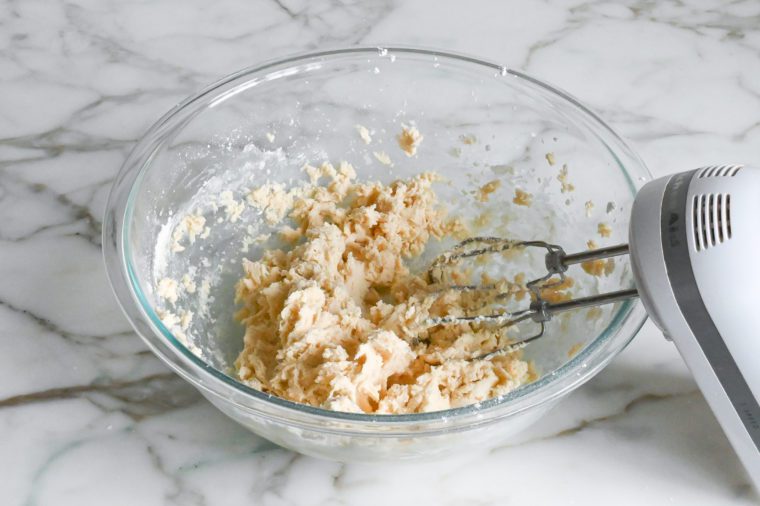
Divide the dough in half (if you have a scale, each half will weigh about 10.5 oz) and place each half in a greased, parchment-lined, 8-inch round cake pan.
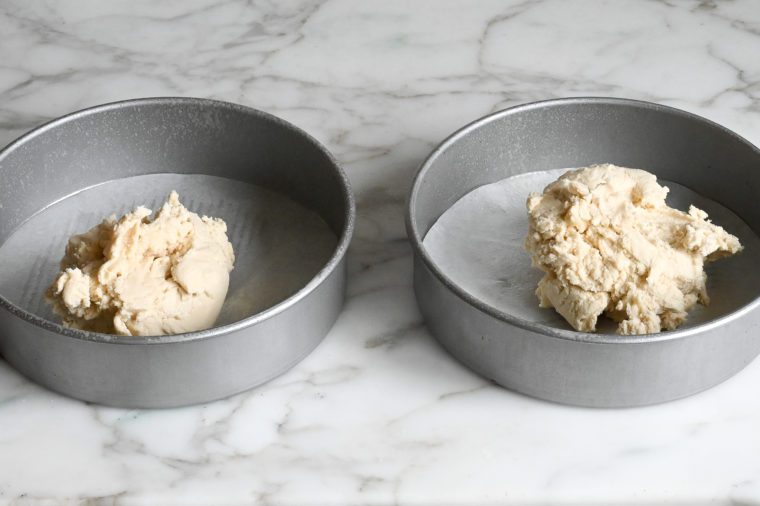
Dust your hands with flour and press each half into an even layer in the prepared pans. To smooth the surface, place a piece of plastic wrap over the dough and smooth with your hands. Use a fork to prick the dough all over in 1-inch intervals. This allows the steam to escape while the shortbread bakes.
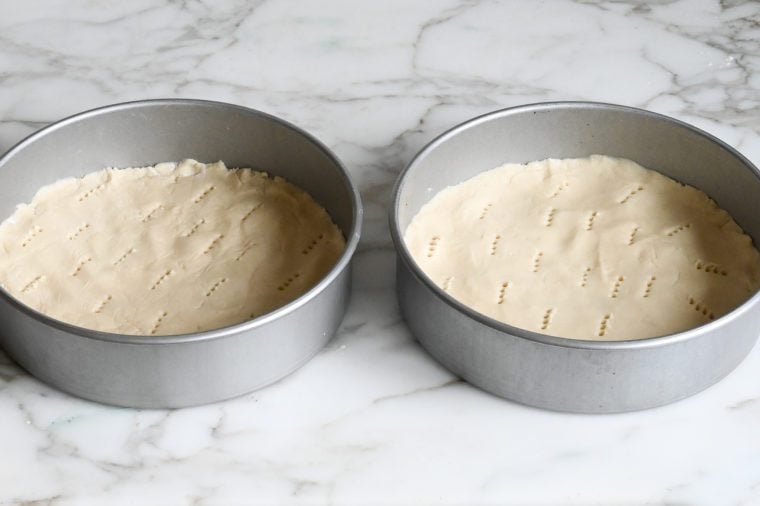
Bake the shortbread in a 300°F oven until it’s a light golden brown across the top surface, and a deeper golden brown around the edges, about 35 minutes. Shortbread should be baked low and slow so that it doesn’t take on much color in the oven. It should remain pale on top and turn slightly golden around the edges.
Remove the pans from the oven, and let cool on a wire rack for about 10 minutes.
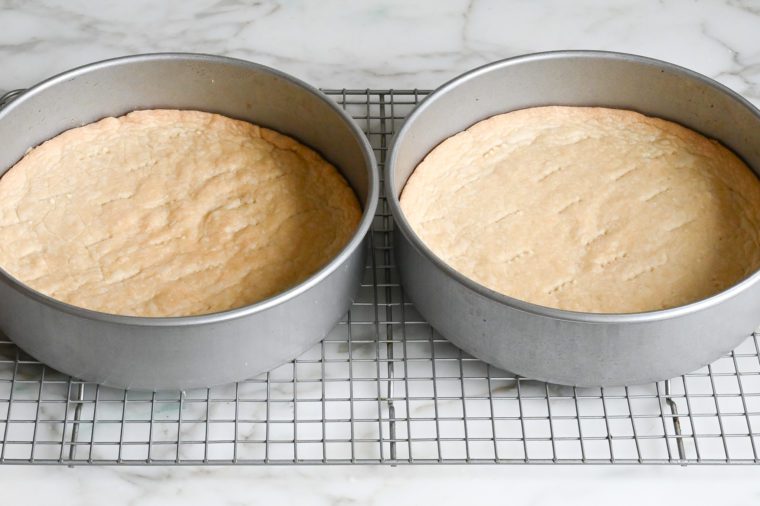
Run a blunt knife around the edges of the pan to loosen the shortbread, and then carefully turn each round out of the pans, using your hand to gently lower the shortbread onto a cutting board.
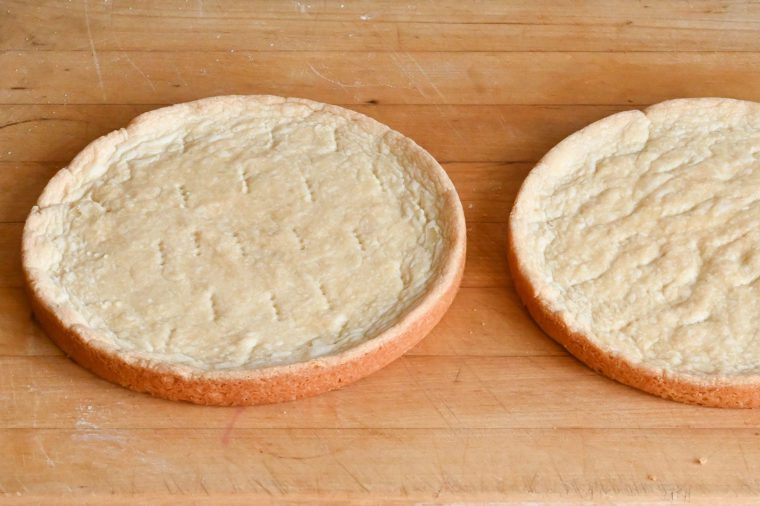
Using a sharp knife, cut each round into 8 or 10 wedges. (Do this while the shortbread is still warm; otherwise, it won’t cut easily and will crumble.)
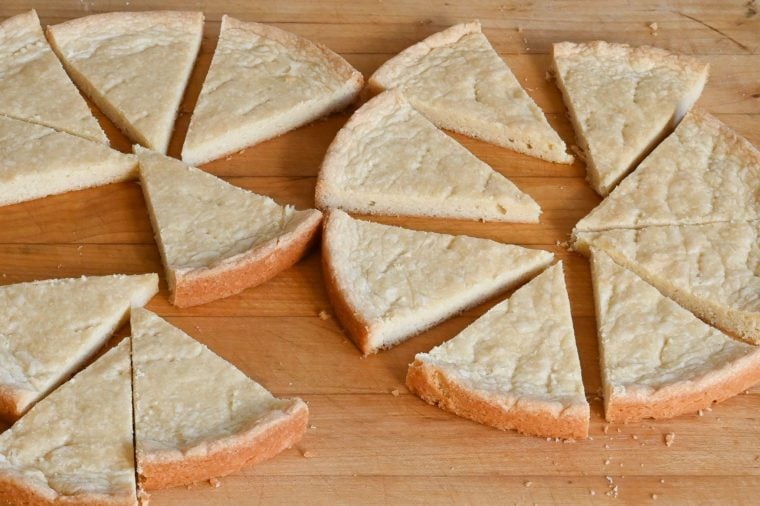
Let the shortbread cool on the cutting board, and then store in an airtight container.
I really enjoy classic shortbread as it’s delicious on its own, but there are also options for bringing a subtle twist to the flavor profile. For a bit of brightness, you might add lemon or orange zest, or for a hint of warmth, try cinnamon. Another way to enhance shortbread is by dipping it in melted chocolate or adding a light dusting of festive sprinkles or coarse sugar before baking, giving it just a touch of flair without taking away from its buttery simplicity.
Make-Ahead, Freezing & Storage Instructions
Shortbread cookies last nicely for up to a month stored in an airtight container at room temperature. This long shelf life makes them ideal for Christmas cookies because they can be enjoyed for weeks after the holidays. And either the dough or the baked cookies can be frozen for up to 3 months. To freeze the dough, shape it into 2 disks, wrap each securely in plastic wrap, and freeze in a sealable bag. When you’re ready to bake, thaw the dough overnight in the refrigerator. To freeze after baking, layer the cookies in an airtight container between sheets of parchment paper or aluminum foil. Thaw the cookies at room temperature before serving.

You May Also Like
Scottish Shortbread
The rich, buttery goodness of shortbread cookies is hard to beat. These delightfully crumbly cookies are perfect for the holidays or any time you’re in the mood for a sweet treat.
Ingredients
- 1 cup (2 sticks) unsalted butter, at room temperature
- 1 cup confectioners sugar
- ½ teaspoon salt
- 2 teaspoons vanilla extract
- ¼ teaspoon almond extract
- 2 cups all-purpose flour, spooned into measuring cup and leveled-off
Instructions
- Preheat the oven to 300°F and set an oven rack in the middle position. Lightly grease two round 8-in cake pans with nonstick cooking spray. Line the pans with parchment rounds, and then spray again.
- In the bowl of an electric mixer fitted with the paddle attachment or beaters, combine the butter, sugar, salt, vanilla extract, and almond extract. Beat until smooth and creamy, about 1 minute. Add the flour beat on low speed until the dough comes together in a cohesive mass.
- Divide the dough in half (if you have a scale, each half will weigh about 10.5 oz). Dust your hands with flour and press each half into an even layer in the prepared pans, dusting your hands with more flour as necessary to prevent the dough from sticking. To smooth the surface, place a piece of plastic wrap over the dough and smooth with your hands. Use a fork to prick the dough all over in 1-inch intervals to allow steam to escape while the shortbread bakes.
- Bake the shortbread until it's a light golden brown across the top surface, and a deeper golden brown around the edges, about 35 minutes.
- Remove the pans from the oven, and let cool on a rack for about 10 minutes. Run a blunt knife around the edges of the pan to loosen the shortbread, and then carefully turn each round out of the pans, using your hand to gently lower the shortbread onto a cutting board. Using a sharp knife, cut each round into 8 or 10 wedges. (Do this while the shortbread is still warm; otherwise, it won't cut easily and will crumble.) Transfer the shortbread wedges to a rack to finish cooling. Store in an airtight container at room temperature for up to 1 month, or freeze for longer storage.
- Freezer-Friendly Instructions: The shortbread dough can be frozen for up to 3 months. After mixing, shape the dough into 2 disks, wrap each securely in plastic wrap, and place them in a sealable bag. Thaw overnight before baking. To freeze the shortbread after baking, store in an airtight container separating layers with parchment paper or aluminum foil. Thaw at room temperature before serving.
Nutrition Information
Powered by ![]()
- Serving size: 1 wedge
- Calories: 152
- Fat: 9 g
- Saturated fat: 6 g
- Carbohydrates: 16 g
- Sugar: 6 g
- Fiber: 0 g
- Protein: 1 g
- Sodium: 60 mg
- Cholesterol: 24 mg
This website is written and produced for informational purposes only. I am not a certified nutritionist and the nutritional data on this site has not been evaluated or approved by a nutritionist or the Food and Drug Administration. Nutritional information is offered as a courtesy and should not be construed as a guarantee. The data is calculated through an online nutritional calculator, Edamam.com. Although I do my best to provide accurate nutritional information, these figures should be considered estimates only. Varying factors such as product types or brands purchased, natural fluctuations in fresh produce, and the way ingredients are processed change the effective nutritional information in any given recipe. Furthermore, different online calculators provide different results depending on their own nutrition fact sources and algorithms. To obtain the most accurate nutritional information in a given recipe, you should calculate the nutritional information with the actual ingredients used in your recipe, using your preferred nutrition calculator.

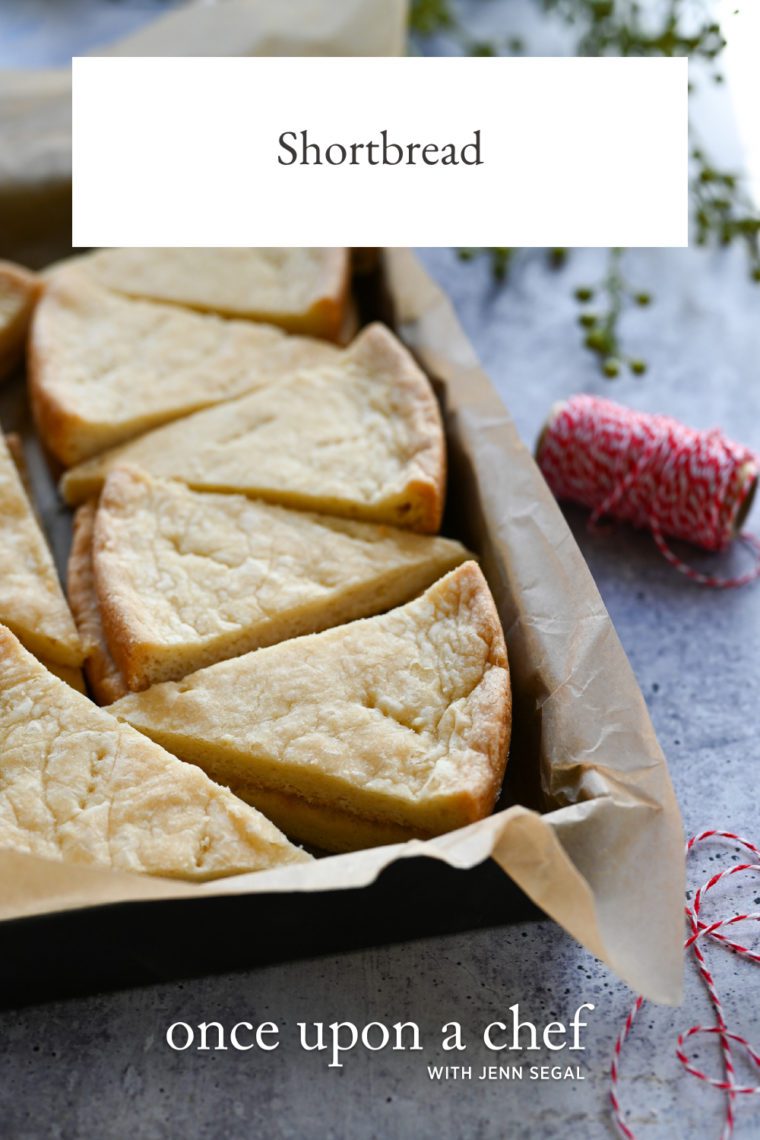
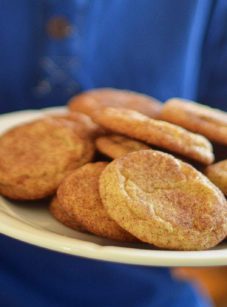
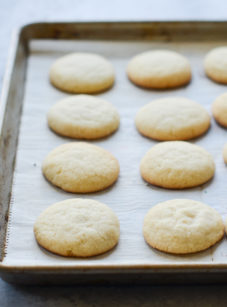
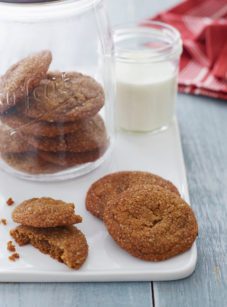
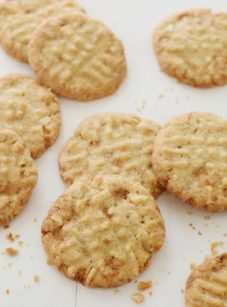
made 1/2 recipe in 8 ” springform, lined with parchment paper
Kerigold butter a must
no almond extract
zest of a medium size lemon
1/4 cp granulated sugar instead of xxxx
threw everything but butter into the Cuisinart
a quick whirl
added cold cubed butter, dough came together quickly\300 degrees 40 minutes
cut immediately in pan, going around edge with knife, into 12 wedges
so fast, so good
I’d like to make bars out of these for the Christmas cookie plate.
What size square pans or would a 9 13 pan work?
Hi Cathy, Ideally I’d use two 8-inch square pans. One 9×13-inch pan will work, too, but the shortbread will be on the thicker side.
Hello! I’ve made this several times and it’s so good…perfectly buttery, slightly sweet and I love the touch of almond. Thanks for sharing a delightful recipe 🙂
Honestly it is better with no other flavouring than the butter which should be what you taste with a shortbread so I left those out. It really turns out crisper than I prefer with powdered sugar (it should tender rather than crisp) but since caster sugar which is what is used in the original is nearly impossible to find in stores in the US it is a passable substitute.
The shortbread recipe is delicious and came out perfectly. This is a keeper and could easily be one that I make for the neighbors as a Christmas treat. I think the almond is perfect and a great touch. Thank you for another wonderful recipe!
My parents were born in Scotland and we had shortbread in the house at all times, not just holidays! My mother’s recipe was flour, sugar, and butter and maybe salt. Can’t say I ever ate much of my mother’s, but I like your recipe much more!
Hi Jenn! Could I successfully cut this recipe in half?
Thanks, Ally in NJ
Definitely — hope you enjoy!
Thanks!!
I love this recipe–reviewed it ages ago. I made a batch this afternoon with a few tweaks:
* omitted the extracts but used the grated zest of 1 Navel orange–I incorporated the zest after the butter and sugar combo were creamed/mixed together, but before the flour was added
* reduced the flour to 1.5 cups, but added .5 cup of corn starch to make a more tender cookie (flour, corn starch and salt were sieved together several times to ensure even distribution)
* used my old standby: two-piece 10″ metal tart tin; cut dough into 20 cookies (a little over half an inch thick and used a small wooden skewer to mark holes)
They are parcelled up now, and delivered to my favourite neighbours. Gosh they’re yummy–thank you Jenn.
(N.B. I do not use parchment paper for these cookies, nor do I butter/spray the tart tin–they release beautifully. I do take considerable care to mark off the 20 sections pre-bake; make the cuts within 15 minutes of removing them from the oven; wait another 10 minutes to remove outer rim of tin, then separate the 20 pieces and allow to cool).
Delicious! and the almond took these cookies to new heights!
I don’t have cake pans so used a 9×13 baking pan and followed all baking instructions. They came out perfectly – just square!
Hi Jenn,
I am wondering if I could make this shortbread to use for the crust in your amazing Coconut Cream Pie? The recommended shortbread cookies (Walker’s) are hard to find and expensive on Amazon. I have a scale so I would use the weight measurement rather than the number of cookies required. By the way, the pie was amazing!
Sure, Denise – that should work well!